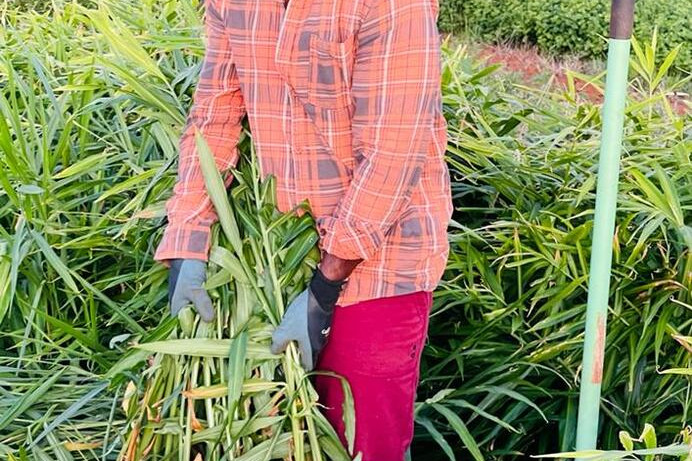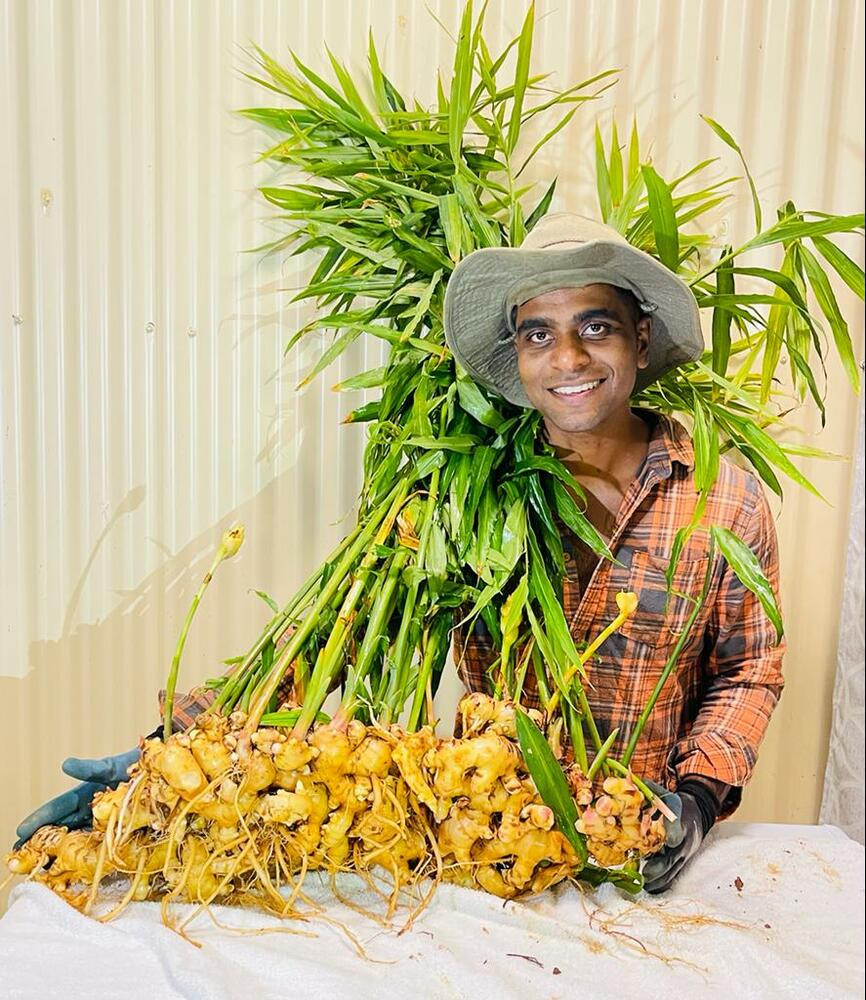On The Land
24 June, 2022
Promising ginger growth at Innisfail
HIGH crop yields, good weather and a firm market have left Cassowary Coast ginger farmer Joe Jose delighted with the harvest of his first commercial crop.

Ginger prices are currently averaging around $21 a kilo, and while they have been higher, that represents a 51 per cent increase on 2017 levels.
“Until we had begun harvesting the crop, we were just operating on the belief that Innisfail was an ideal production site, but we now know that is true,” Mr Jose said.
“Everyone who has tasted our ginger have loved the flavour and we have dealers in Sydney who are happy to market our product.”
Growing up as a village boy in southern India, Mr Jose said ginger had been a part of his culture.
“We always had ginger growing in our backyard and it was the first crop I ever tried growing myself,” he said.
“As I grew up and understood that I wanted to become a farmer, ginger was the obvious crop of choice, so I started researching the best places in the world to grow good quality ginger.
“When I discovered Innisfail, with its rich soils, high humidity and reliable, annual rainfall of around 3,553mm (142 inches) or about 67.5mm per week, it was not a hard decision for me to move here a year ago and give it a try.
“Actually, it was such an ideal place for ginger, I was a bit surprised to find out there wasn't already a commercial ginger farm established in this region.
“You might think having no competition would be a good thing for me, but initially, it actually made it more difficult.”
Finding a reliable seed source was the first challenge.
As a commercial grower, maximising yield was a priority and to achieve maximum yield, the seed had to be marketable, free of pests, diseases and chemicals, fully matured and suited to growing in local conditions.
Normally buying seeds from a neighbouring farmer would solve all those issues, but Mr Jose wasn't that lucky.
With no other growers in the region, there was also no farm design models to learn from, no examples of pest and disease control or irrigation and fertilisation systems, making it harder for a new farmer to the district.
Fast forward to June 2022 and after much trial and error, Mr Jose is very happily harvesting his first crop of Misty Mountain ginger and recording yields of 1:100 times growth in a six month period.
“This very promising result means each kilo of ginger seed has produced 100kg of product, giving me the confidence to think that ginger production could be the next new industry in this area,” he said.
“I developed just under three hectares initially and we are adding another eight hectares at the moment which will be ready for harvest next year.
At that point, we will be rated as a medium scale producer according to Australian standards.
“I have an established processing unit on my property and encourage more growers in the region to consider trialling the crop.
Working together, we could reduce the costs of production and freight and attract a better price for growers.
“I value the medicinal qualities of ginger (helping manage nausea, weight and blood sugar, relieve pain and inflammation and onset of cancer) as much as its flavour and I believe both qualities are enhanced by Innisfail's tropical climate and mineral rich soils, just as wine's place of origin influences its taste.
“Innisfail's mild winter means the ginger will continue growing all year round, reducing the risk of price fluctuations from a market shortage of old season ginger, which should help ensure continued customer support for the product.”
Mr Jose said the most cost effective way to grow ginger was from healthy rhizomes which are cut into 40–60-gram pieces with at least two growth buds/eyes.

The rhizomes are then stored in a warm, humid place for 2-4 weeks until the buds are developed and ready to plant.
Just under two tonnes of seed per hectare is planted 2-6cm deep and 20-50cm apart into weed-controlled, fertilised and PH balanced land which has been formed into beds and irrigated at a rate of up to 24.7 megalitres per hectare, depending on the season.
A modified potato planter and harvester can be used to plant and pick the ginger.
Confection ginger is ready to be harvested in 5-6 months and the balance can be picked for fresh consumption as required over a 10-18 month period.
Historically most of Australia's small but increasing ginger crop, valued at around $16 million, has been grown around the Sunshine Coast and Wide-Bay Burnett regions.
In 2017, Australian growers produced 8,000 tonnes of ginger, 55 per cent of which was processed, while the balance was sold into the fresh, domestic market.
The nation's largest operator, Buderim Ginger, treated over 95 per cent of the country's crop through their plant.


